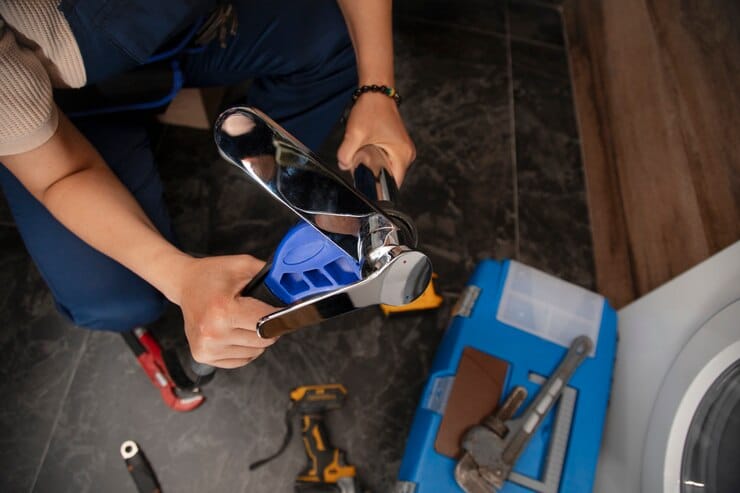Common Gasket Installation Mistakes and How to Avoid Them

Gaskets play a crucial role in sealing systems across various industries, ensuring airtight and leak-proof connections. Whether used in refrigeration, automotive, or industrial applications, gaskets must be installed correctly to function properly. Even minor mistakes during installation can lead to energy loss, equipment inefficiency, or costly repairs.
Understanding common gasket installation errors and how to avoid them helps extend the lifespan of equipment and improves overall performance. Whether replacing a refrigerator gasket or installing a new seal in a commercial system, precision and proper technique are key.
Why Proper Gasket Installation Matters
A gasket’s primary function is to create a secure seal that prevents air, moisture, and contaminants from entering or escaping. When installed incorrectly, several issues can arise:
- Leaks and Air Gaps: A poorly fitted gasket allows cold air to escape, increasing energy consumption.
- Premature Wear and Tear: Misaligned gaskets wear out faster, leading to frequent replacements.
- Reduced Efficiency: Equipment that has to compensate for sealing failures may overwork its components, reducing lifespan.
Avoiding these mistakes ensures a strong seal, optimal efficiency, and cost savings over time.
Common Gasket Installation Mistakes
Even experienced technicians can make errors when installing a gasket. Being aware of these pitfalls can help prevent issues before they start.
1. Incorrect Sizing and Fit
One of the most common mistakes is using a gasket that does not fit the application properly. A gasket that is too small or too large can fail to seal correctly.
How to Avoid It:
- Always measure the existing gasket or the space it will fit into before ordering a replacement.
- Refer to manufacturer specifications to ensure the correct size and shape.
- If replacing a refrigerator gasket, check for compatibility with the make and model of the unit.
2. Not Cleaning the Installation Surface
Dirt, grease, and residue from old gaskets can interfere with the new seal. Installing a gasket on an unclean surface prevents it from adhering properly, leading to air leaks.
How to Avoid It:
- Remove all traces of the old gasket, including adhesive or residue.
- Clean the installation area using mild detergent and warm water or an approved cleaning solution.
- Dry the surface completely before applying the new gasket.
3. Overstretching the Gasket
Many installers make the mistake of pulling or stretching the gasket to fit. This weakens the material, causing it to lose its shape and sealing ability.
How to Avoid It:
- Gently press the gasket into place without pulling or forcing it.
- Align one section at a time, ensuring an even fit around the entire perimeter.
- If the gasket has a magnetic seal, allow it to settle naturally without excessive force.
4. Misalignment During Installation
A gasket that is not properly aligned can create gaps, preventing an airtight seal. Even slight misalignment can lead to performance issues.
How to Avoid It:
- Install the gasket gradually, checking for even placement as you go.
- Use a guide or marking system to ensure a straight, consistent application.
- If using clips or screws to secure the gasket, tighten them evenly to prevent shifting.
5. Skipping the Curing Process
Some gaskets require time to fully conform to their intended shape after installation. Skipping this step can lead to improper sealing.
How to Avoid It:
- Allow the gasket to sit undisturbed for the recommended time before testing the seal.
- For refrigerator gaskets, close the door and leave it closed for several hours to let the magnetic strip fully engage.
- If necessary, use heat (such as a warm cloth or low-setting hairdryer) to help the gasket conform to the surface.
Best Practices for Successful Gasket Installation
Following proper installation techniques prevents common issues and ensures a durable, long-lasting seal.
1. Choose the Right Material
Not all gaskets are made from the same materials. Depending on the application, different materials offer varying levels of durability and flexibility.
Common Types of Gasket Materials:
- Rubber Gaskets: Flexible and resistant to wear, often used in refrigeration and industrial applications.
- Silicone Gaskets: Heat-resistant and suitable for food-grade applications.
- Foam Gaskets: Lightweight and effective for sealing lightweight enclosures.
- Metal-Reinforced Gaskets: Used in high-pressure or heavy-duty applications.
2. Inspect the Gasket Before Installation
Before installing a new gasket, inspect it for:
- Defects such as cracks, tears, or warping.
- Proper flexibility to ensure a tight seal.
- Any shipping compression that may require time to return to its normal shape.
3. Apply Even Pressure
Whether pressing a gasket into place or securing it with fasteners, applying even pressure prevents unnecessary distortion. Uneven pressure can cause sections of the gasket to lift or compress unevenly.
4. Test the Seal After Installation
Once installed, perform a test to ensure the gasket is sealing correctly.
Testing Methods:
- The Dollar Bill Test: Place a dollar bill between the door and the gasket, then close the door. If the bill pulls out easily, the seal may not be tight enough.
- Visual Inspection: Look for gaps or misalignment along the edges.
- Temperature Monitoring: In refrigeration applications, monitor temperature stability to ensure no cold air is escaping.
Reliable Gaskets USA provides high-quality gasket solutions designed for durability and proper sealing, ensuring businesses and homeowners get the best performance from their equipment.
When to Replace a Gasket
Even with proper installation, gaskets have a limited lifespan and will eventually need replacement. Knowing when to replace a gasket helps maintain efficiency and prevent further issues.
Signs of Gasket Wear:
- Visible Cracks or Tears: Damage to the material weakens the seal.
- Flattening or Hardening: Over time, gaskets can lose flexibility, preventing a tight fit.
- Condensation or Ice Build-Up: Indicates air leakage in refrigeration units.
- Higher Energy Usage: A faulty gasket forces appliances to work harder, increasing electricity costs.
Replacing worn-out gaskets on time prevents costly repairs and ensures continued efficiency.
Final Thoughts: Getting the Installation Right
Gaskets may seem like small components, but they play a vital role in maintaining efficiency, whether in refrigeration, industrial applications, or other sealing systems. A properly installed gasket improves energy efficiency, extends the life of equipment, and prevents common performance issues.
By avoiding common installation mistakes—such as improper sizing, misalignment, and failing to clean the installation surface—businesses and homeowners can maximize gasket performance and reduce unnecessary maintenance costs.
Reliable Gaskets USA offers a range of gasket solutions designed to meet the highest standards for sealing efficiency. Choosing the right gasket and installing it correctly ensures reliable operation and long-term durability.

Why Smart Startups Choose Custom AI Business Solutions Today

How to Optimize Business Operations with Vending Machines in Australia

How a portable office for sale can streamline on-site operations and boost productivity

Onsite Tire Change in Ottawa : Safe Fast & Professional Tire Services

Accelerating drug discovery through the DEL-ML-CS approach

Fresh Tips on How to Grow YouTube Followers: Best Methods

Picuki: The Ultimate Instagram Viewer and Editor Tool

5 Windows 11 Tips to Enhance Your Online Gaming Experience








